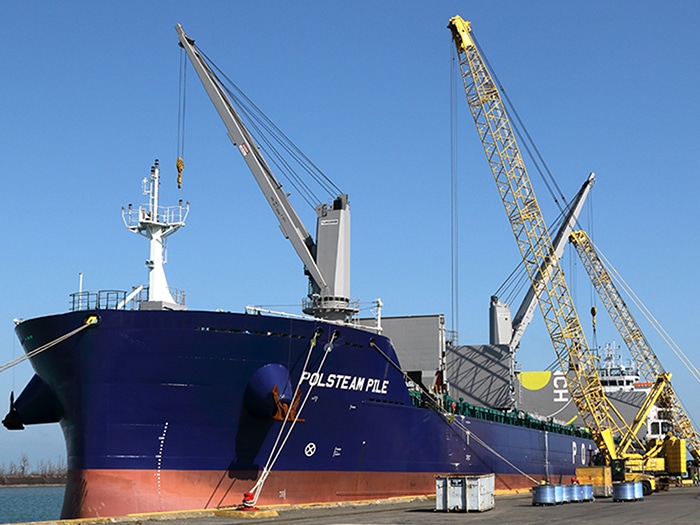M/V Pile is Burns Harbor’s first ocean vessel of 2025
Burns Harbor Welcomes Shipping Season with M/V Pile

On April 12, Ports of Indiana-Burns Harbor marked the commencement of the 2025 international shipping season with the arrival of the M/V Pile, a bulk carrier from Polsteam. The vessel successfully docked at the Lake Michigan port after a 19-day journey from Port of Ijmuiden in the Netherlands, traversing the North Atlantic and the Great Lakes-St. Lawrence Seaway system. This event not only signifies the start of the shipping season but also highlights the port’s vital role in global trade.
Celebrating Tradition and Economic Impact
During the welcoming ceremony, Ryan McCoy, the port director, presented Captain Janusz Szatanik with the Ports of Indiana’s “Steel Stein.” This annual tradition celebrates the first ship’s arrival and symbolizes Northwest Indiana’s identity as “The Steel Capital of North America.” McCoy expressed enthusiasm for the event, stating, “We look forward to this day every year. It’s fun to share a little Hoosier hospitality with the crew and present the Steel Stein, but most importantly, it signals to our global trade partners that Burns Harbor is open for business.”
The M/V Pile delivered 8,300 metric tons of specialized steel products, essential for local manufacturers. The unloading process was managed by port stevedore Logistec, with assistance from local workers affiliated with the International Longshoremen’s Association and the International Union of Operating Engineers. This collaboration underscores the port’s commitment to supporting the local economy, as it handles approximately 3 million tons of cargo annually, with steel-related products accounting for over 50% of its throughput.
The St. Lawrence Seaway, which opened for the 2025 shipping season on March 25, marks its 67th year of operation. The Seaway is closed during winter for maintenance on its 15 locks, while Ports of Indiana-Burns Harbor remains operational year-round, facilitating cargo transport via river barge, lake vessels, and trucks. This continuous operation is crucial for maintaining the flow of goods and supporting the region’s economic vitality.
